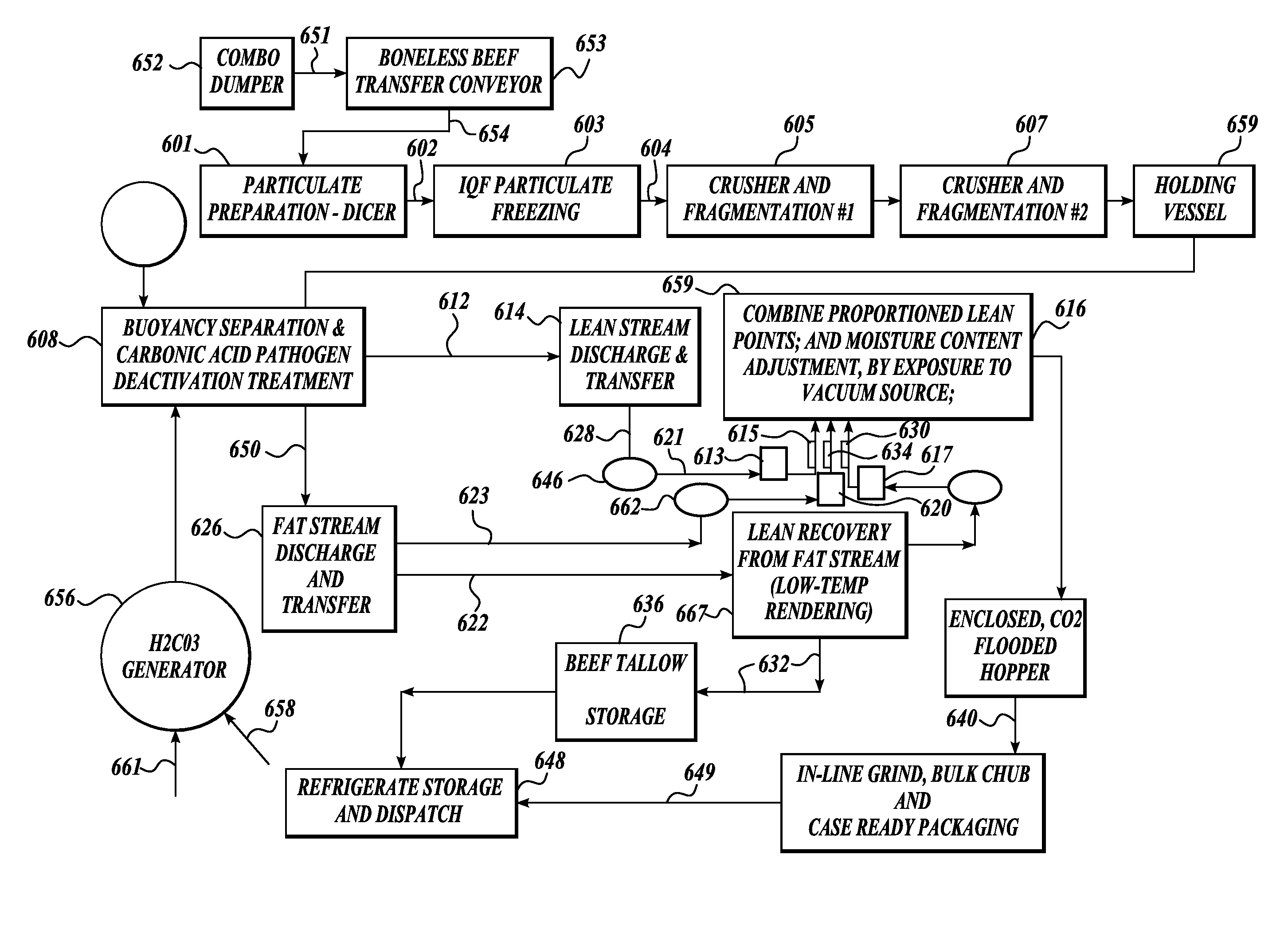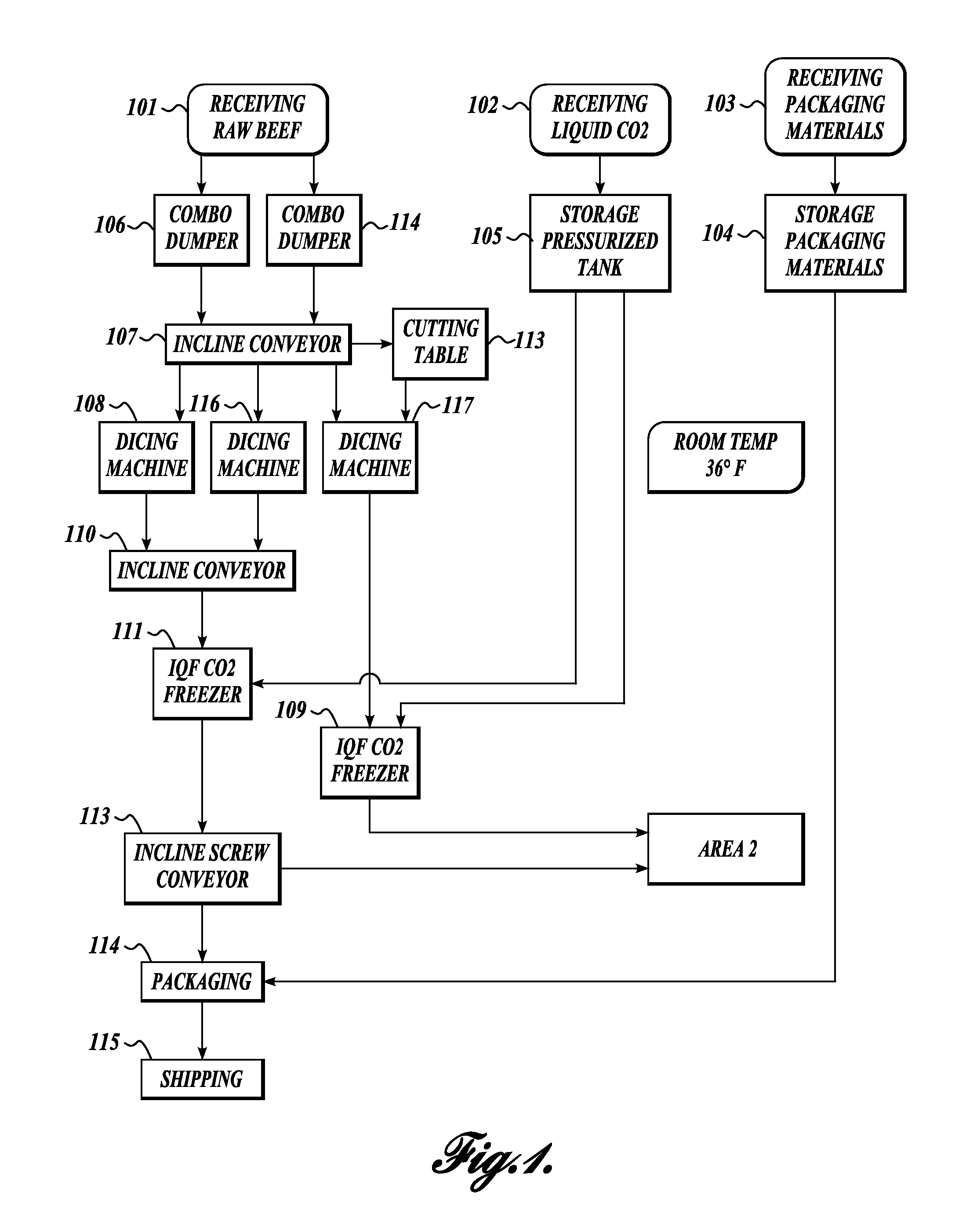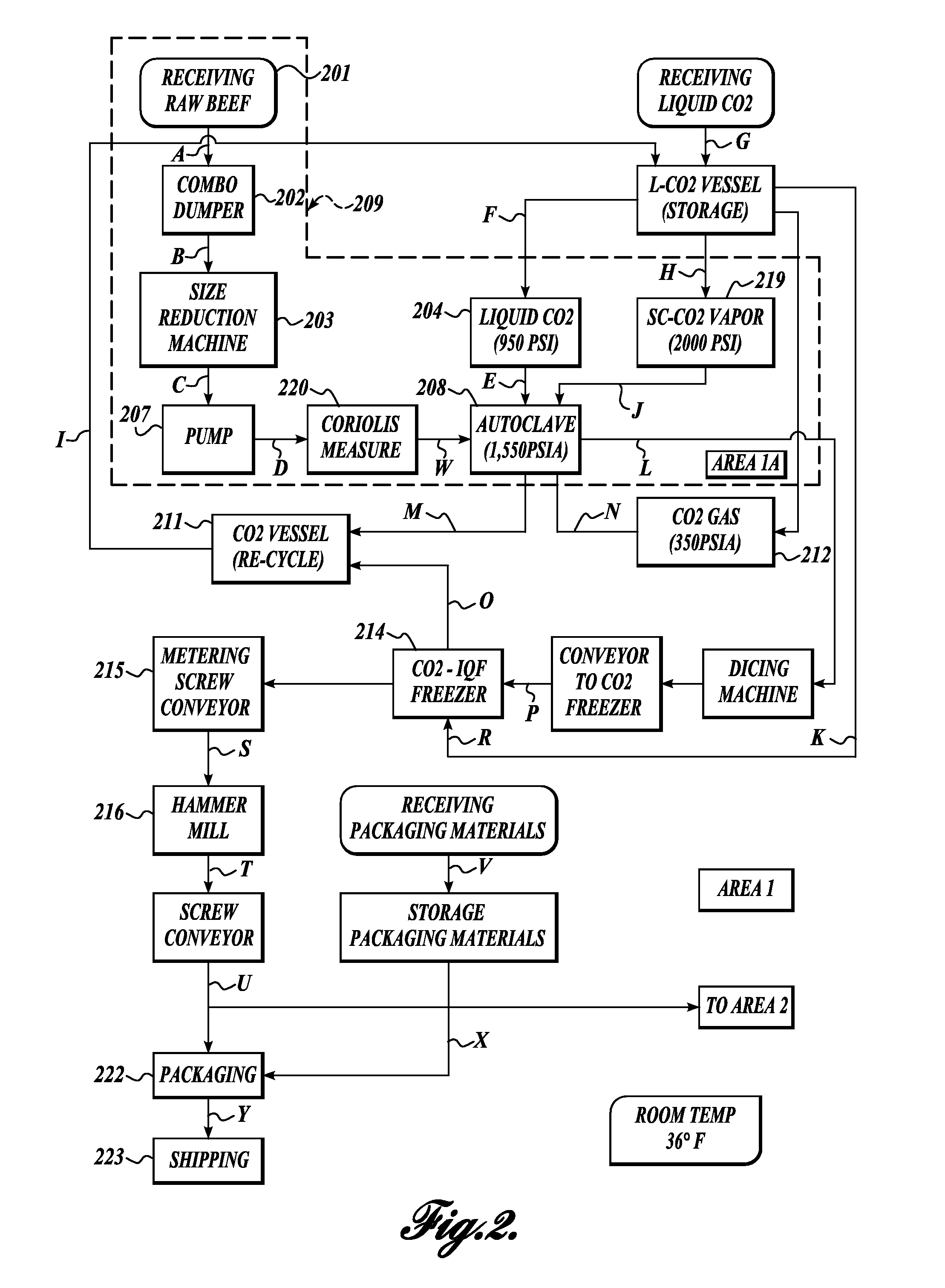Method for separating bone fragments and tallow from a single ingredient stream of beef by controlling the frozen condition of the beef and immersing in carbonic acid at elevated pressures
a single-in-one, beef technology, applied in the field of separating bone fragments and tallow from a single-in-one stream of beef, can solve the problems of affecting the quality of beef, the inability to control the frozen condition of beef, and the inability to detect the presence of pathogens at a regular interval, so as to eliminate the source of cross contamination, effectively kill, reduce or completely remove, the effect of efficient separation of lower value tallow
- Summary
- Abstract
- Description
- Claims
- Application Information
AI Technical Summary
Benefits of technology
Problems solved by technology
Method used
Image
Examples
Embodiment Construction
[0053]The term “fat” as used herein can mean fat and tallow when used in reference to animal matter such as beef particulates. Throughout the description “beef” is used as a representative material that can be used in the disclosed methods. However, it is to be appreciated that the disclosed methods can be practiced not only on beef, but on any meat, such as from poultry, pork, and seafood.
[0054]Referring to FIGS. 1, 2, 3 and 4, each FIGURE provides the flow path of a stream of boneless beef (or other similar fat containing material) including receipt of raw material in FIG. 1, which connects to the apparatus represented by rectangular images of FIG. 2, which in turn connects with the diced IQF beef receiving section shown in FIG. 3, and, in turn, the apparatus of FIG. 3 delivers a stream of fat containing lean to the edible rendering apparatus shown diagrammatically in FIG. 4. The combined flow diagrams of FIGS. 1, 2, 3, and 4 illustrate one embodiment of a production facility arra...
PUM
 Login to View More
Login to View More Abstract
Description
Claims
Application Information
 Login to View More
Login to View More - R&D
- Intellectual Property
- Life Sciences
- Materials
- Tech Scout
- Unparalleled Data Quality
- Higher Quality Content
- 60% Fewer Hallucinations
Browse by: Latest US Patents, China's latest patents, Technical Efficacy Thesaurus, Application Domain, Technology Topic, Popular Technical Reports.
© 2025 PatSnap. All rights reserved.Legal|Privacy policy|Modern Slavery Act Transparency Statement|Sitemap|About US| Contact US: help@patsnap.com



